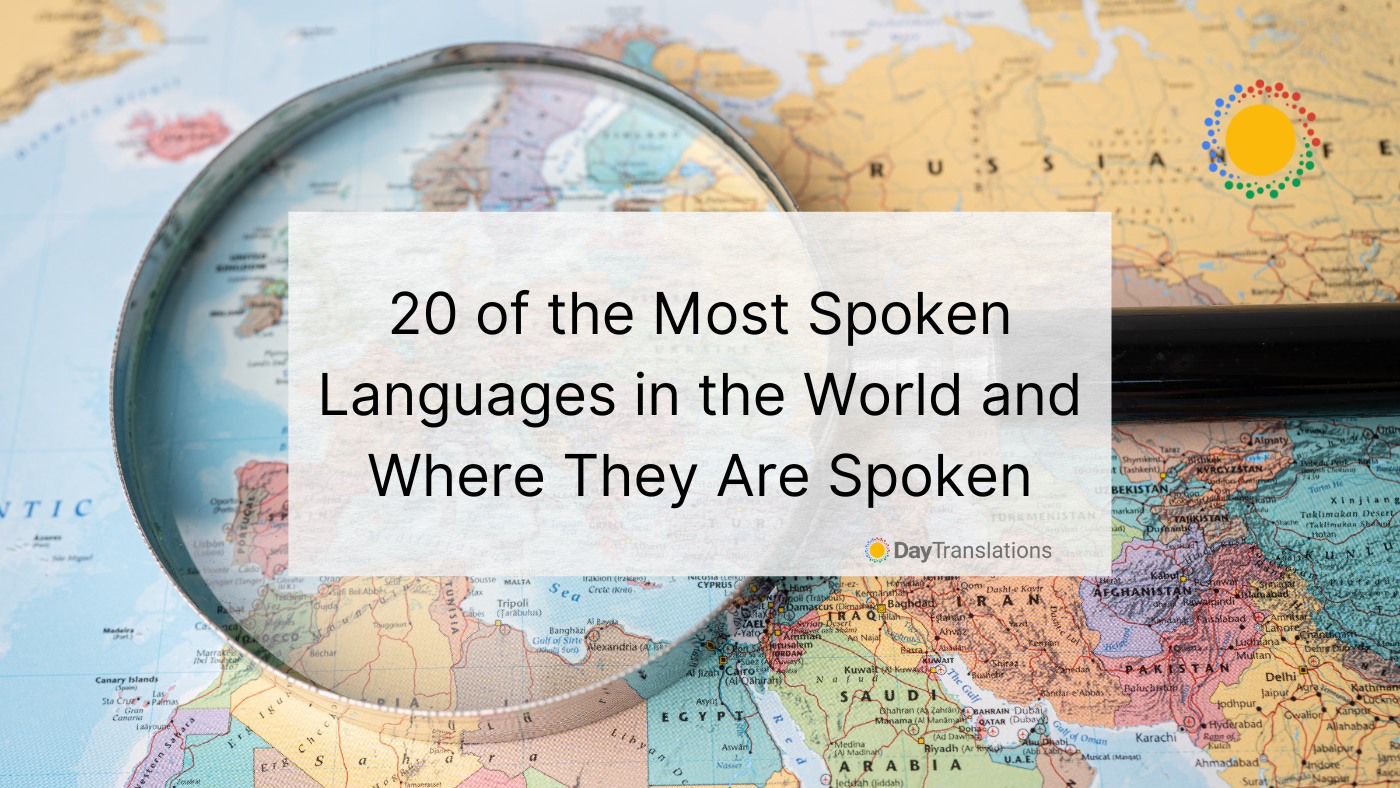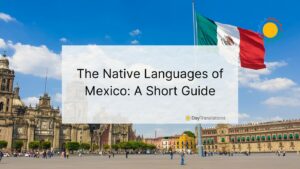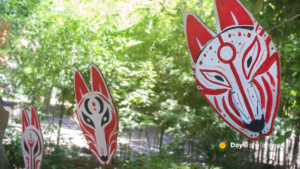Our world is becoming more and more globalized by the day, and as a result, many of us are being introduced to a variety of some of the most spoken languages in the world. With a plethora of countries, cultures, and ethnicities that all have their own unique languages, it’s not surprising that there are more than 7,000 widely spoken languages in the world!
If you’re reading this article, you probably have a decent understanding of one of the most popular languages on earth, English. And although English is currently the world’s most spoken language (although not by the count of the number of native speakers), it’s not the only one that matters.
As you explore the languages in this article, you’ll discover that there are many more ‘international languages’ that might matter more than English in the near future. As a vital part of human connections, language allows us to share our thoughts, ideas, and feelings with the rest of the world.
Read on to find out which languages fill out the 20 most spoken languages in the world and discover some fun and fascinating facts about each of them!
1. English
‘The‘ is the word believed to be the most common word in one of the world’s most widely spoken languages, English. With around 1.135 billion total speakers, the most spoken language in the world is English, and it’s the official language in 67 countries. Although when compared to the number of native speakers, Chinese trumps English.
English is also a recognized language in many international organizations, including the United Nations, the European Union, the International Monetary Fund, and the World Trade Organization. English is a Germanic language, a sub-family of the Indo-European family of languages. It’s closely related to German, Dutch, and Frisian.
Quick Facts
- Old English was introduced to the British Isles in the 5th century by Anglo-Saxon native speakers that immigrated from continental Europe.
- During the Norman conquest of the 11th century, Middle English emerged under French influence.
- English is the most popular second language to learn as it is viewed as the international language of business and considered by some as the most influential language in the world.
- The word “I” is one of the oldest words in English.
2. Mandarin Chinese
Hot on the heels of the English language (and the victor in terms of only native speakers) is Mandarin Chinese, with an estimated 1.12 billion total speakers. Mandarin is also known as ‘putonghua’ which translates to “common speech.” When it comes to native speakers, Mandarin trumps English, though. The origins of the language’s name derive from the Portuguese word ‘mandarin,’ a term used by Portuguese explorers to describe Chinese officials during the 16th century.
This ancient language has been spoken in China for more than 3,000 years and is also the official language of Taiwan and Singapore. Contrary to popular belief, Mandarin isn’t necessarily the language spoken most in terms of the world’s population, but it is the language in the world with most native speakers.
Quick Facts
- Mandarin Chinese is a Sino-Tibetan language and is related to Burmese and Tibetan.
- Chinese languages are often grouped together as one language by the Western world, but it’s actually a group of related languages and Chinese dialects. Although they’re related, some Chinese languages are mutually unintelligible.
- Mandarin is the most spoken form of Chinese and has about 92.5 million native speakers. It also ranks as one of the world languages that’s most studied by non-native speakers.
- Mandarin is a tonal language, so the pitch is used to convey the meaning of words.
- There are more than 3,000 characters in the Chinese alphabet!
- Written evidence of the Chinese languages dates as far back as 1250 B.C.
3. Hindi
With around 600 million speakers, the Hindi language, one of India’s two official languages, is the world’s third most spoken language with a staggering amount of native speakers. Every year on September 14th, the language is celebrated to commemorate the decision to adopt Hindi as India’s primary language, and the day is called Hindi Diwas or Hindi Day.
What’s interesting to note is the fact that even though Hindi is India’s main language, not everyone in India understands the language. Many different variations of Hindi are spoken throughout the world, and it’s a language commonly spoken in Fiji, Trinidad, Tobago, Suriname, and Guyana.
Quick Facts
- Hindustani is a collective name for the Urdu and Hindi languages which are mutually intelligible.
- As an Indo-Aryan language, Hindi is a relative of other Indian languages, including Bengali, Punjabi, and Romani.
- Hindi stems from the ancient Sanskrit languages that date back to the 2nd millennium B.C.
- The name Hindi derives from the Persian word ‘Hind,’ which translates to “land of the Indus River.”
4. Spanish
Also known as Castilian in Spain, Spanish is spoken by some 543 million people (counting native and non-native speakers) and is used as the lingua franca of 20 countries. It’s also a recognized language of the United Nations and other international organizations like the European Union and the African Union. Spanish also has its own language preservation society of native speakers, called the Real Academia Española, or Royal Spanish Academy, that was established in 1713.
The language has more than 40 million speakers in the United States alone, and over the past decade, it’s become more influential in pop culture as well. Many English productions have been translated and localized for the Spanish language and culture, making it one of the most translated languages in the world! Many native English speakers also use Spanish throughout a variety of African countries.
Quick Facts
- As an Iberian Romance language, Spanish is closely related to Portuguese, with both languages having originated from Latin spoken by merchants and soldiers.
- Evidence of the Spanish language can be found in 9th-century texts.
- Although much of the Spanish vocabulary is based on Latin, it also has roots in Greek, Arabic, and Gothic languages.
- The Spanish language used inverted exclamation and question marks at the start of phrases like ¡Hola! (Hello!), and it’s something unique to Spanish and various languages used within Spain.
5. Arabic
Arabic is the only language of the United Nations that’s written from right to left. With more than 274 million speakers, Arabic is the main language of 26 countries, most of which have their own unique variations of the language. The main dialect used between Arabic native speakers to ensure a mutually intelligible conversation is Standard Arabic.
Standard Arabic is the academic standard used across the Middle East, North Africa, and the Horn of Africa. It’s also the primary language of all Arab League countries and the only form of the language that’s taught in schools at all stages.
Quick Facts
- As a Semitic language, Arabic is closely related to Hebrew.
- The roots of Arabic can be traced back all the way to the 1st century.
- Spanish, Persian, Turkish, Urdu, Hindi, Greek, Bengali, and Punjabi are just some of the many languages that have been influenced and shaped by the Arabic language.
- Colloquial Arabic differs significantly from Formal Arabic, which is used in media and formal events.
6. Bengali
Also known as Bangla, Bengali has around 268 million speakers and is the primary language of Bangladesh. It’s also the second most spoken language and the language with the most native speakers in India. Many people have never even heard of the Bengali language, so they wouldn’t know that it’s one of the most spoken languages in the world.
The language is renowned for its movements, and its speakers are very proud of their unique language. In fact, the country of Bangladesh was named after the language, and not the other way around!
Quick Facts
- As an Indo-Aryan language, Bengali is closely related to the Hind language.
- The language evolved from the ancient Sanskrit language some time between 1000-1200 A.D.
- A study performed between 1960 and 1970 by Encyclopedia Britannica indicated that almost half of all the words in the Bengali vocabulary stem directly from Sanskrit origins.
- The language does not use gender nouns or capital letters.
7. French
With more than 267 million speakers, French isn’t only one of the most spoken languages in the world; it’s also one of the most romantic languages! On top of that, it’s also the main language of the United Nations, the European Union, and other international organizations. It’s used as a main language in 29 countries and territories, including Rwanda and Haiti, where it is studied by non-native speakers and language experts alike.
French, also known as langue française, is a Romance language that stems from the Indo-European family of languages. Thanks to France’s international expansion, French-influenced the conception of many French-based creole languages like Haitian Creole. The language also had a massive impact on many other existing languages, including English. In fact, it’s estimated that up to 40% of the English vocabulary stems back to French origin.
Quick Facts
- French is closely related to lesser-known languages like Picard and Normand, which are also part of the Gallo-Romance family of languages.
- Being a Romance language, French is a distant relative of Portuguese and Spanish.
- The first proof of the French language appeared in texts from 842.
- French was the most common language used for diplomacy between the 17th and mid-20th centuries.
8. Russian
Russian is spoken by some 258 million people across the world and is the official language of Russia, Belarus, Kazakhstan, and Kyrgyzstan. The world’s eighth most spoken language is very popular as a second language for non-native speakers too! It was also the official language of the Soviet Union, and many native speakers still use it in former Soviet states. The Russian language is also widely spoken in Mongolia and Israel.
Many people don’t know this, but Russian is one of the most used languages on the internet too. According to language experts, Russian is one of the richest and most complex languages in the world!
Quick Facts
- As an East Slavic language, Russian is closely related to Belarusian and Ukrainian.
- An early form of the Russian language, Old East Slavic, dates as far back as the 10th century.
- It has been estimated that the Russian language comprises around 200,000 words.
9. Portuguese
Portuguese, with around 258 million speakers, surprisingly has just 5% of its native speakers residing in Portugal. Many countries use Portuguese as their official language. These include Mozambique, Equatorial Guinea, Angola, Brazil, Portugal, Cape Verde, Guinea-Bissau, East Timor, and São Tomé and Príncipe.
Portuguese also has a rich colonial history, which is why the language is also widely spoken in many parts of India. The Portuguese language is one of the best starting points for laying the foundation if you’re aiming at learning other Romance languages. And since they’re so similar, a lot of Portuguese and Spanish words are mutually intelligible.
Quick Facts
- As an Iberian Romance language, Portuguese is a close relative of the Spanish language.
- Portuguese evolved during the medieval era and was named after its country of origin, Portugal, in 1290.
- Most words in the Portuguese vocabulary stem from Latin roots, but many of them also come from Roman Portugal, German Gothic, and Arabic roots.
- It wasn’t until 2009 that the letters K, Y, and W were added to the Portuguese alphabet, and they were merely added due to the increase in English loanwords.
10. Urdu
Urdu is mostly spoken by native speakers in Pakistan and India. But with 230 million speakers worldwide, it’s still one of the most spoken languages in the world. Urdu is very similar to Hindi. In fact, the similarities are so striking that these two are often considered two different versions of the same source language.
As an Indo-Iranian language, Urdu is Pakistan’s official native language and is recognized as an official regional language (secondary language) in India, where Hindi and Urdu are mutually intelligible. The language adopted many English words, including airplane, science, file, bus, and library, but similarly, English adopted words from Urdu and Hindi, including pajamas and khaki.
Quick Facts
- Urdu and Hindi are often grouped together as one language, and between the 13th and 18th centuries, Urdu was often referred to as Hindi.
- Although they sound similar, Urdu and Hindi each have their own unique writing systems. The Urdu and Turkish languages both borrow words from the Persian and Arabic languages, which is why they share some pronunciations.
- Like Arabic, Urdu is written from right to left.
11. Indonesian
As the main language spoken in Indonesia, Indonesian has some 199 million speakers. But because the Netherlands established a presence in the country in the early 17th century, the Indonesian language was heavily influenced by Dutch. The Dutch word ‘tas’, for example, means ‘bag’ in both languages.
Indonesian is very similar to the Malay language, so Indonesian speakers can easily communicate with individuals in Malaysia and Brunei. As one of the easiest Asian languages to learn, Indonesian is believed to be a very good foundation and starting point for learning more complicated languages like Korean, Japanese, and Chinese.
Quick Facts
- Indonesian is spoken in roughly 45 countries across the globe. These include Australia, Suriname, the Netherlands, the United States, the United Kingdom, Saudi Arabia, and Japan.
- According to the developers, Indonesian is one of the most widely used languages in WordPress.
- Indonesian is Vietnam’s second official language.
12. German
Renowned for its impressively long words and innovative insults, German has around 135 million speakers. As the main language of Germany, Austria, Switzerland, Liechtenstein, Belgium, and Luxembourg, it’s easy to see why it’s one of the most spoken languages in the world.
German is also spoken in many other countries, including Italy and Poland. Since it’s a respected business language, speaking German can open up many opportunities for career development with big brands, including Audi, Volkswagen, and Mercedes. Since Germany is a key contributor to international research and development efforts pertaining to science, it’s the second most spoken language in the scientific research world.
Quick Facts
- Being a West Germanic language, German is closely related to Dutch and English.
- The earliest evidence of Old High German dates back to the 6th century.
- Although the German vocabulary mainly contains original words, it does include a few words derived from Italian, French, Greek, and Latin languages.
- Because German has a lot of compound words (when several existing words are combined into one word), it’s a language renowned for its very long words.
13. Japanese
The language isolate of Japanese has about 126 million speakers, most of which live in Japan. The language comprises a lot of loanwords from languages like Chinese, but it still isn’t related to any other known language. In short, nobody is sure where the Japanese language came from.
Although you might assume that it’s the primary language of Japan, the country actually doesn’t recognize any language as an official language. Japanese is an East Asian language that’s part of the Japonic family of languages.
Very little is known about the origins of Japanese and when it first appeared in Japan. Some Chinese documents from the 3rd century hint at Japanese, but there are no substantial texts that appear until the 8th century.
Quick Facts
- The Japonic family of languages includes several different dialects of the Japanese language.
- From what is estimated, the predecessor of the Japanese language landed in Japan somewhere between the 1st and 2nd century B.C. and was brought in by settlers from Asia or the Pacific islands.
- There are four different scripts used in Japanese. Kanji represents ideas. Hiragana represents syllables. Katakana is mostly used for foreign words. And Rōmaji, which is based on Latin script, is mostly used for foreigners.
- In Japanese, they often use suffixes to indicate different degrees of respect.
14. Marathi
Spoken by about 99 million native speakers, Marathi is the official language of the Indian state of Maharashtra. Naturally, it’s closely tied to Hindi, and just like Hindi, Marathi is generally written in the Devanāgarī script.
Aside from Maharashtra, Marathi is also spoken in the state of Goa and several governments and other public organizations throughout India. Although it’s one of the most spoken languages in the world, Marathi has a very small geographical reach compared to other big names in this post. But what makes it really unique is that it’s one of the oldest living languages in the world, which many languages can’t boast about.
Quick Facts
- Being an Indo-Aryan language, Marathi is related to Lahnda, Urdu, Bengali, and Hindi.
- This language is believed to date back more than 2,000 years. It descended from Maharashtri Prakrit, which was a language spoken between 500 B.C. and 500 A.D.
- Maharashtri Prakrit descended from Sanskrit, which is why the modern Marathi language has significant ties to the ancient Sanskrit language.
15. Telugu
Telugu is the largest of the roughly 80 varieties of the Dravidian language family, which is estimated to be around 4,500 years old. Telugu has around 96 million total number of speakers that use it as their first language in India, and it’s a fascinating language for a variety of reasons.
The Telugu language has its own script, which makes it independent, and it doesn’t share a lot of similarities with other languages. And instead of using letters, Telugu words are written in syllables, of which there are more than 60 different versions. Plus, just like Marathi, Telugu is one of the world’s oldest languages.
Quick Facts
- As a Dravidian language, Telugu is related to many languages spoken throughout India and Sri Lanka. But it’s also related to languages spoken in Pakistan, Bhutan, Afghanistan, Bangladesh, Nepal, Malaysia, and Singapore!
- This language was heavily influenced by the ancient Sanskrit language.
- Telugu inscriptions date back to 400 B.C.
16. Turkish
There’s much more to Turkish than just Turkish Delight. In fact, some 88 million people speak Turkish, firmly establishing its spot in the roundup of the most spoken languages in the world.
It might not be one of the most popular languages to learn, but Turkish is a very important language. It’s related to Turkmen, Azerbaijani, and Uzbek, which means that the Turkish language can open up doors of opportunity in these regions.
With a rich and exciting history that dates back 1,500 years, Turkish is a fascinating language. It has 29 different letters in its alphabet and only incorporated the use of the Latin alphabet in 1928!
Quick Facts
- Turkish is related to languages found in Southeast Europe and Central Asia.
- Old Turkic (foundation of modern Turkish) inscriptions can be traced back to the 8th century.
- Turkish has many loanwords from the Persian and Arabic languages, most of them adopted in the 10th century.
17. Tamil
Telugu might be the largest in terms of speakers when it comes to the Dravidian family of languages, but Tamil is by far the oldest. It’s spoken by around 85 million native speakers and is one of the oldest languages on earth. Its roots stretch back more than 1,500 years, and still, it’s one of the most widely spoken languages in India (and the world, for that matter!).
Since it’s a member of the Dravidian language family, Tamil shares a lot of similarities with other members of the language family. Languages like Kannada and Malayalam resonate a lot with modern Tamil. But the Tami language is also related to languages spoken throughout Sri Lanka.
Quick Facts
- Based on ancient inscriptions, Tamil has been around since the 5th century B.C.
- Tamil was the language used for the first book that was ever printed in an Indian language.
- Because it adheres to linguistic purism, modern Tamil does not include the use of loanwords from other languages.
18. Yue Chinese
Around 85 million people speak Yue Chinese (also known as Cantonese), making it Hong Kong’s most widely spoken language. Yue originated from ancient Chinese, and its speakers reside mainly in the Guangdong provide of China, Taiwan, and Malaysia.
Yue originally arrived in China when traders started developing the coastal areas of what is now called southern China between 1000 B.C and 400 B.C. the language has roots in Mandarin and Cantonese dialects, so even though these languages developed independently over the last 2,500 years, there are strong similarities between them.
Quick Facts
- Yue Chinese is part of the Sino-Tibetan family of languages.
- It’s the main language used in Chinatowns across the world.
- There are at least six different tones used in this Chinese language.
- Written and spoken Yue Chinese differ from each other.
19. Wu Chinese
The number of speakers for Wu Chinese is around 82 million, and unlike Mandarin that uses just four main tones, Wu uses as many as eight! The Wu group of dialects (yes, there are a few of them) all form part of the Sino-Tibetan language family. Wu has been spoken for more than 2,500 years and is closely related to Mandarin and Cantonese.
Although it’s classified as a literary language, they don’t formally speak or teach Wu in schools since there’s no unified written form of the language. And unlike Mandarin, Wu does not use simplified Chinese characters. The Wu Chinese language shares a few similarities with Mandarin, but Wu contains many loanwords from Vietnamese and Japanese.
Quick Facts
- Wu Chinese is a group of dialects used around China’s southern Shanghai region.
- Wu is part of the Sinitic language family and is spoken primarily in Shanghai, Zhejiang Province, and parts of the Jiangsu Province, which make up the cultural region of Wu.
- While the languages spoken in Northern Wu are mutually intelligible, those spoken in the South of Wu are not.
20. Korean
Last but not least on the list of the most spoken languages in the world is Korean. With some 82 million speakers, Korean is closely related to Altaic languages that are spoken in countries like Japan, Russia, and Turkey.
The earliest records of the Korean language date back to 1446 CE and the Joseon Dynasty. And although there are at least 82 million people that speak Korean, they don’t all live in Korea. In fact, almost half of all Korean speakers are spread across various countries, including China, the United States, and Canada, to name but just a few.
Known as Hangul, the Korean alphabet is estimated to have been created between 1443 and 1444 CE by Kind Sejong. Thanks to its simplicity, the Korean language is very popular, and within its alphabet, which consists of 24 letters, each letter corresponds to a sound.
Quick Facts
- Like Japanese, Korean is considered to be a language isolate. Some people, however, believe that Korean might be related to Japanese or South Indian languages.
- Korean has been considered a possible Altaic language, which could tie it to Finnish and Mongolian languages.
- The earliest form of Korean dates back to prehistoric times.
The Importance of the Most Spoken Languages in the World
Learning about any language outside of your mother tongue is essential since it can open many doors of opportunity for you. When you learn more about different languages, you’re exposed to a variety of different cultures, which in turn provides an opportunity to better understand the way others think and gain a better understanding of their values. And when you understand different cultures, you have a better shot at understanding things from the perspective of others.
When you explore and learn new languages, you also actively work on your mental alertness levels. It can also open up new career opportunities and can help you land a dream job with an international organization.
The languages we’ve included on this list are at the driving force of globalization, and if your aim is to keep up with the times, it could hurt to brush up on some basic language skills pertaining to the top 20 most spoken languages in the world.
The Wrap Up
Language is a fascinating aspect of human life. The most spoken languages in the world span across every corner of the earth, and they stretch far beyond just the English language. From Mandarin Chinese to Spanish, Tamil to Korean, each one of these languages is special and unique in their own right.














Sorry, the comment form is closed at this time.